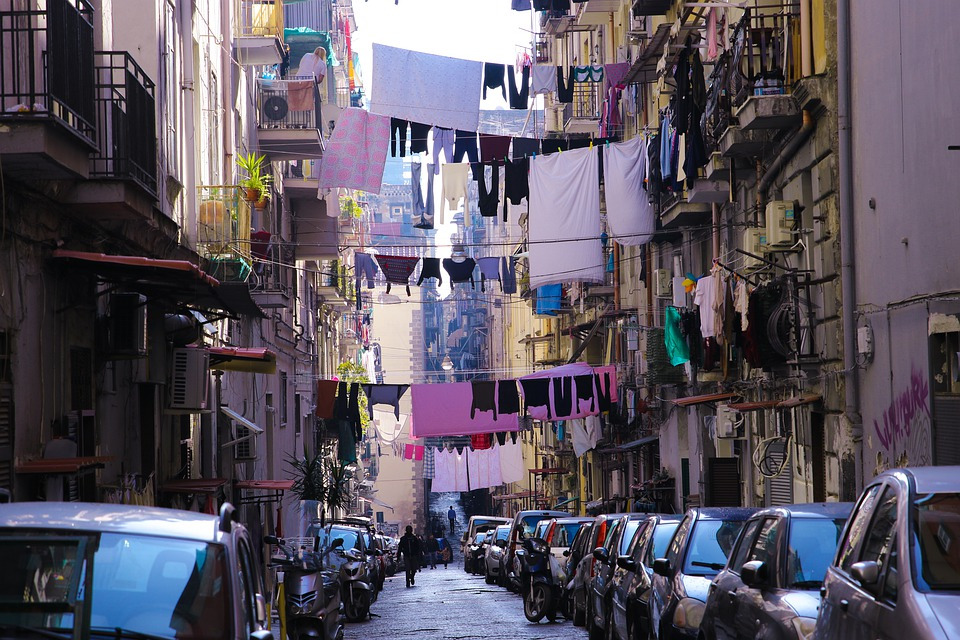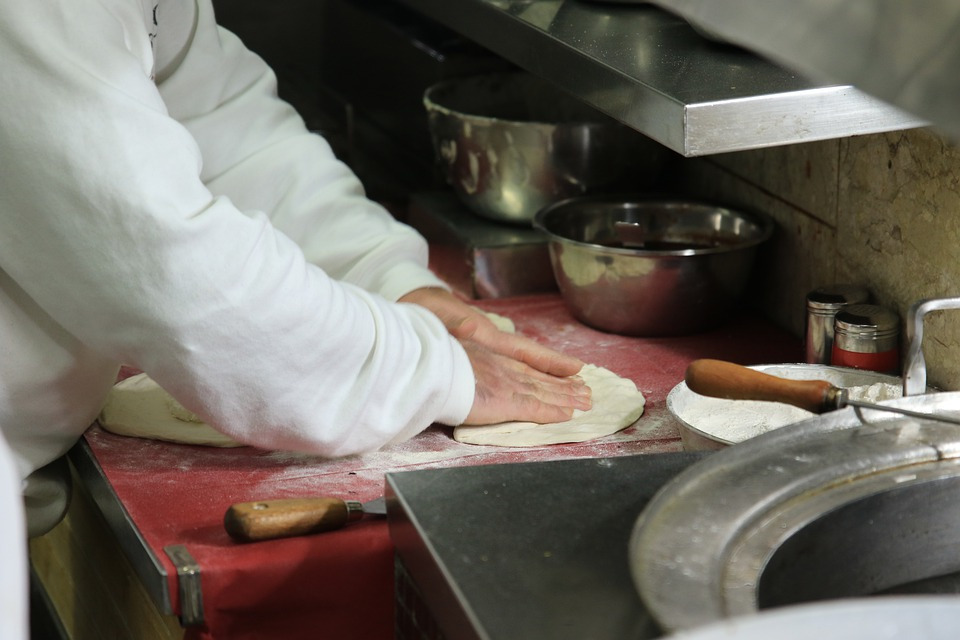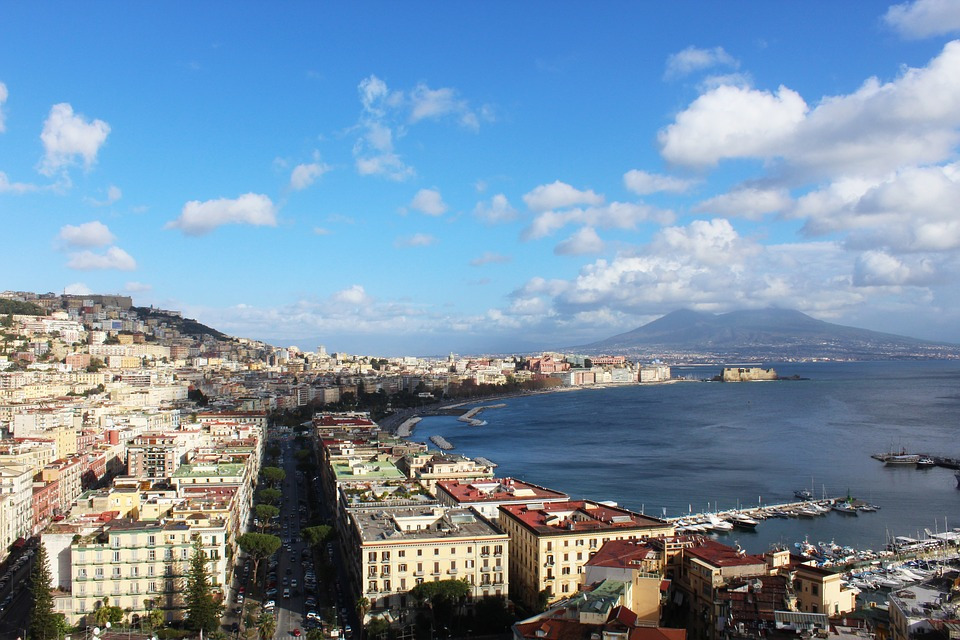You can't visit Naples without taking a walk through the workshops lining via San Gregorio Armeno, which is also known as the
Strada dei presepi, or street of the nativity scenes. Every year, thousands of visitors from all over Italy descend upon this alleyway to admire and buy an array of traditional, artisanal nativity figurines that are real works of folk art. Neapolitan nativity scenes feature figurines made by contemporary artists, depicting traditional characters but also famous modern-day celebrities from the worlds of politics, news, sports and cinema, creating a joyful mix of folklore, worldliness, humanity, and popular culture. Figurines and nativities are always handmade from wood or terracotta with a fine eye for detail. Each piece is a one-of-a-kind creation produced by expert craftsmen, enhanced with outfits made from high-quality fabrics. Walking through the
Via dei Presepi, one feels as if plunging in an ancient folk party, surrounded by vibrant colors and the smell of roasting chestnuts sold by street vendors, along with the theatricality and authenticity of the Neapolitan people themselves.
Sacred and ProfaneIn Italy, it is a Christmas tradition to create nativity scenes depicting the birth of Jesus using small objects of art. This is a deep-rooted custom, and nowhere is it taken more seriously than in Naples! Many families start to work on their nativities just after All Soul's Day on November 2nd, starting with the construction of cardboard mangers. Tradition has it that on Christmas Eve, all family members form a
single-file line while holding candles, with the youngest relative placing a statue of baby Jesus in the manger. It would be hard to find a home in Naples that doesn't have a nativity scene. Domestic nativities range from minimalist styles featuring only a handful of woodcut figurines, to those that take up an entire room and are visited by friends, neighbors, and acquaintances. There is a nativity scene for every size, style, and taste!
The Neapolitan nativity tradition is overflowing with stories, anecdotes, tall-tales, and
superstitions. Among the figurines, you can find sleeping Benino, a shepherd boy who is usually placed on the nativity's highest hill. Folk tradition believes that Benino fell asleep and dreamed of nativities. You must be careful not to wake him, or the entire nativity scene will disappear. A woman with a child placed near a cave is usually present too, as is a fisherman — because fish was one of the first symbols of early Christians persecuted under the
Roman Empire. You will also usually find a gypsy, a bishop collecting alms, and two good friends, Uncle Vincenzo and Uncle Pascale, who personify Carnival and Death, along with a wide array of other characters whose unique tales are told by the skilled hands of master artisans and by the entertaining stories-telling of the Neapolitans.
It is a widespread custom to dismantle the nativity scene just after the Epiphany on January 6th, the day on which Catholics celebrate the day when the Magi visited baby Jesus. The nativity's
papier-mâché frame, however, is preserved until the 17th, when it is burned in the traditional bonfire of the feast day of Saint Anthony the Abbot. It is believed that setting fire to a frame on this date will bring
good luck, ensuring a new nativity will be built next year.
 The Role of Food in Nativity Scenes
The Role of Food in Nativity ScenesSuch an important Neapolitan tradition must certainly include another fundamental aspect of local culture — food! There are several figurines depicting the world of cooking, including for example: the pizza maker, a baker shaping bread, a housewife kneading bread, and a cook with a saucepan, chef's hat and ladle. The figurine of
Cicci Bacco is especially interesting, as it is filled with symbolism. It takes its name from Bacchus, the Roman god of wine, and is usually depicted with a plump body and rosy cheeks, standing in front of a wine cellar with a flask in hand. It represents wine, the pleasure of drinking wine, and the outcasts who will be saved by the coming of Christ. Neapolitan nativity scenes also feature decked-out tables, often filled with dairy products in reference to shepherds, as well as a variety of other delicacies, including
pizza, bread, wine, pasta, steak and traditional local dishes. Local Christmas sweets are often shown, as well as offered during holiday visits to admire a home's nativity. These include struffoli, roccocò, mostacciuoli, susamielli, and raffiuoli. Recently, there have also been figurines depicting famous TV chefs, such as Campania's own Antonino Cannavacciuolo, Jamie Oliver, Massimo Bottura or Carlo Cracco.
 A Secular Tradition
A Secular TraditionThe Neapolitan love for nativity scenes dates back millennia. One document from
1025 mentions a nativity scene in the Chiesa di Santa Maria, while in 1324, one was cited in the chapel of the Algani family home in Amalfi.
The Neapolitan nativity tradition as we know it today began to take shape at the end of the 1500s, when San Gaetano da Thiene created a nativity filled with figurines dressed according to the customs of the time in the oratory of the
Santa Maria della Stelletta in the
Ospedale degli Incurabili (Hospital for the Uncurable). Over the centuries, nativities were built using smaller and smaller figurines, until the first mobile nativity scene was built by priests of the Piarist order in 1627. After this, painted backdrops began to be replaced by three-dimensional landscapes and non-religious figurines started to appear.
It wasn't until the 1700s that nativities reached their full glory, thanks to King Charles of Bourbon, whose love of craftsmanship made these scenes extremely fashionable. Wooden statues were replaced with mannequins featuring a wire core, wooden extremities and terracotta heads. This period also saw the introduction of the "
scoglio" — a sort of rocky cliff-face that housed a nativity scene, along with an increased number of figurines, including crowds of farmers, shepherds, fisherman, artisans, beggars, and noblemen, all represented doing their daily work or engaged in leisure-time activities. These figurines were so detailed and elaborate that they would steal the scene of any nativity! The king himself, who was skilled in manual work and the creation of devices, would surround himself with set designers, artists and architects in the creation of the royal palace's nativity scene. All Neapolitan citizens started to create nativities in their own homes, even those families of more humble means. They would use fewer figurines, a smaller
scoglio, or a display case. Much like the ones used today, the eighteenth-century nativity scene displays a historic cross-section of society, paying homage to the customs of everyday life. It was born in an era that saw Naples transformed into a cultural capital, becoming a must-see destination for Italian and foreign travelers, such as Goethe or Lord Byron.

After this golden era, the tradition went by the wayside, with most large nativity scenes being permanently dismantled. The few that were saved include the famous Cuciniello Nativity, which is preserved, along with other 18th-century nativities, in Naples' San Martino Museum. There is also a magnificent, little-known collection of Neapolitan nativity scenes housed in the Bavarian National Museum in Munich. Luckily, the love of nativities never waned among the general public and the tradition continued to be passed down among artisans located on the aforementioned via San Gregorio Armeno, which continues to attract the interest of collectors, fans, and the simply curious, who each year follow the ancient ritual of
andar per presepi, or visiting nativity scenes.
Are you wondering what famous celebrities from politics and show business are featured this year next to baby Jesus, Mary, Joseph and the shepherds? In 2020, Neapolitan nativity scenes honored recently deceased footballer Diego Maradona, who used to play for S.S.C. Napoli. They also featured many socially distanced figurines wearing masks. If you have the opportunity to visit a Neapolitan nativity scene in person, make sure to try traditional local Christmas sweets and stop by a pizzeria to enjoy the real McCoy. After you finish your authentic pizza, you can get back to visiting the almost infinite number of extraordinary nativity scenes that can be found in Naples. There are so many, it almost seems like Naples itself is one giant nativity scene!


